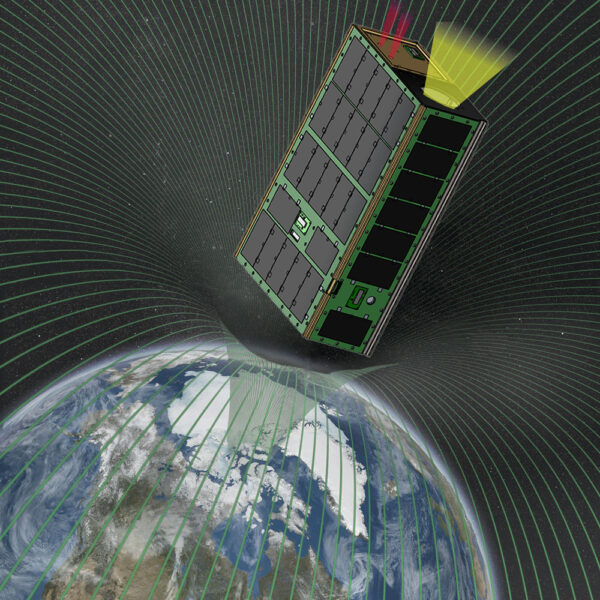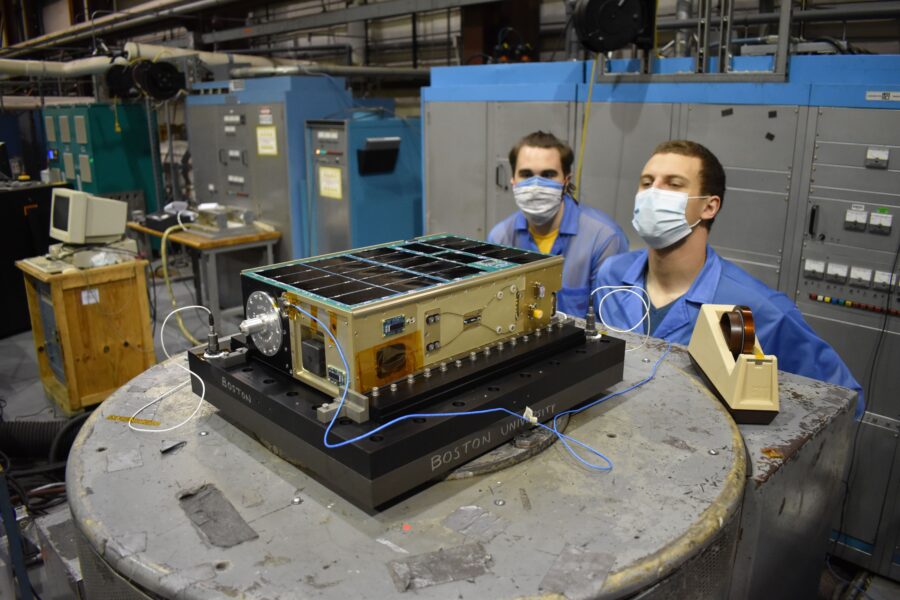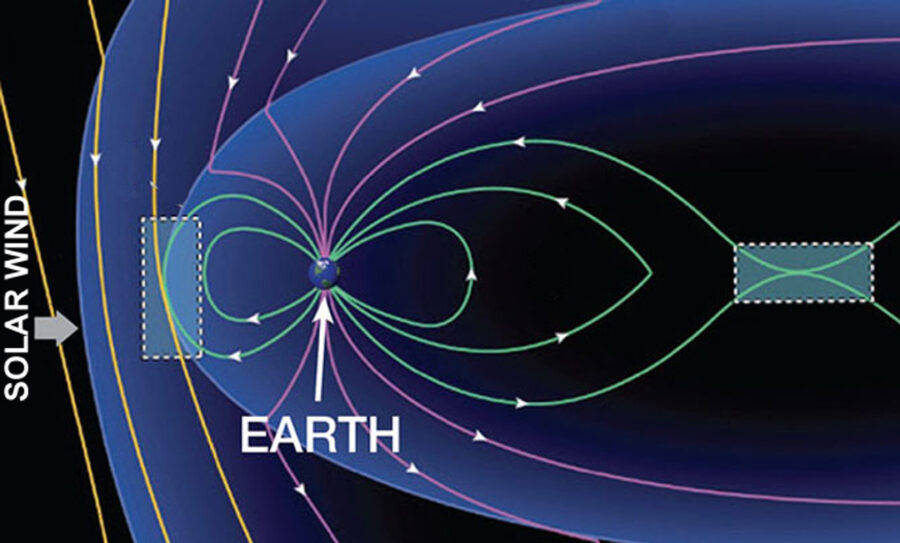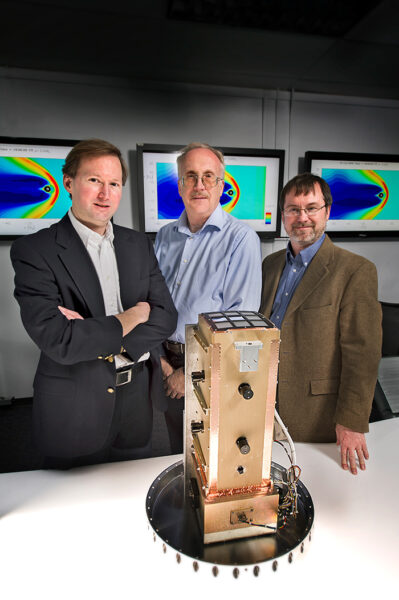A small mission will hitch a ride to space in late September to study interactions at the Earth-Sun boundary.

Boston University
CubeSat missions are set to address big questions, in Earth orbit and beyond. One such upcoming mission is the Cusp Plasma Imaging Detector (CUPID), built around a 6U CubeSat chassis about the size of a toaster oven. Launching next week as part of a rideshare mission along with Landsat 9, CUPID will study the Sun-Earth boundary on a wide scale.

Boston University
From its vantage point in low-Earth orbit 550 kilometers (340 miles) up, CUPID will study charge exchange between the charged solar wind and neutral atoms in Earth's upper atmosphere, a process that is still poorly understood.
During periods of high solar activity, the magnetic fields of the Sun and Earth can fuse in a process known as magnetic reconnection, allowing charged particles from the Sun to leak in toward Earth's atmosphere. Understanding these interactions is crucial, as the charged particles may put satellites and astronauts in harm’s way.
"CUPID will image how plasma streaming from the Sun enters Earth's space environment," says principal investigator Brian Walsh (Boston University). "This plasma carries with it energy and momentum, which drives dynamics in the Earth's space environment."

NASA
Micro vs. Macro Views
While spacecraft such as NASA’s Magnetospheric Multiscale (MMS) mission study magnetic reconnection events on a micro scale, the much-smaller CUPID probe will provide a macro-scale view by means of its wide-field X-ray camera.
Every time charged particles interact with neutral atoms in Earth's atmosphere, exchanging electrons, X-rays are released in the process. But capturing a wide-field perspective of the process from close-up and then bringing it into focus is a challenge. That's especially true for CUPID — most focusing X-ray telescopes are built on the scale of schoolbuses, not toasters.
To focus X-rays within such a small spacecraft, CUPID will use a grid of tightly-packed channels. The design has been in development at NASA's Goddard and Wallops Flight facility for the past 16 years, and a proof of concept prototype flew on a suborbital rocket launch out of White Sands in 2012. A second suborbital launch in 2015 allowed researchers to miniaturize the payload, for eventual orbital launch as a CubeSat.

NASA / Chris Gunn
Building CUPID has taught researchers and engineers key lessons in putting an X-ray telescope mission in a small package. Previous X-ray space observatories such as ROSAT, Chandra and XMM-Netwon relied on large focusing elements a meter in size to produce a field of view less than a degree across.
"CUPID uses a new type of focusing element called 'lobster-eye optics,' says Walsh. "These optics allow CUPID to image with a wide field of view in the compact package of a CubeSat."
Landsat 9 is launching out of Vandenberg Space Force Base on Monday, September 27th at 18:11 UT (2:11 p.m. EDT) atop an Atlas V rocket. Also onboard the Educational Launch of Naonsatellites 34th rideshare mission is the Colorado Ultraviolet Transit Experiment (CUTE), which will characterize the atmospheres of exoplanets in the near-ultraviolet (255-330 nanometer) range, and two 6U CubeSats for the CesiumAstro company.
All of these missions are headed into a Sun-synchronous orbit. Landsat 9 is part of an Earth-observing legacy that dates back to the Landsat 1 mission launched in 1972.
It will be exciting to see CUPID take to space next week.
 1
1









Comments
Lariliss
October 1, 2021 at 9:44 am
Today engineering is mature, tested with numerous designs and flights. So that we can realize bald unprecedented missions.Renewing the on-going missions facilities fleets and putting specific, precise targets.
The space weather is one of the key players related to the Earth stability predictions.
The extraordinary and right time mission to bring an important step forward.
Great.
You must be logged in to post a comment.
You must be logged in to post a comment.